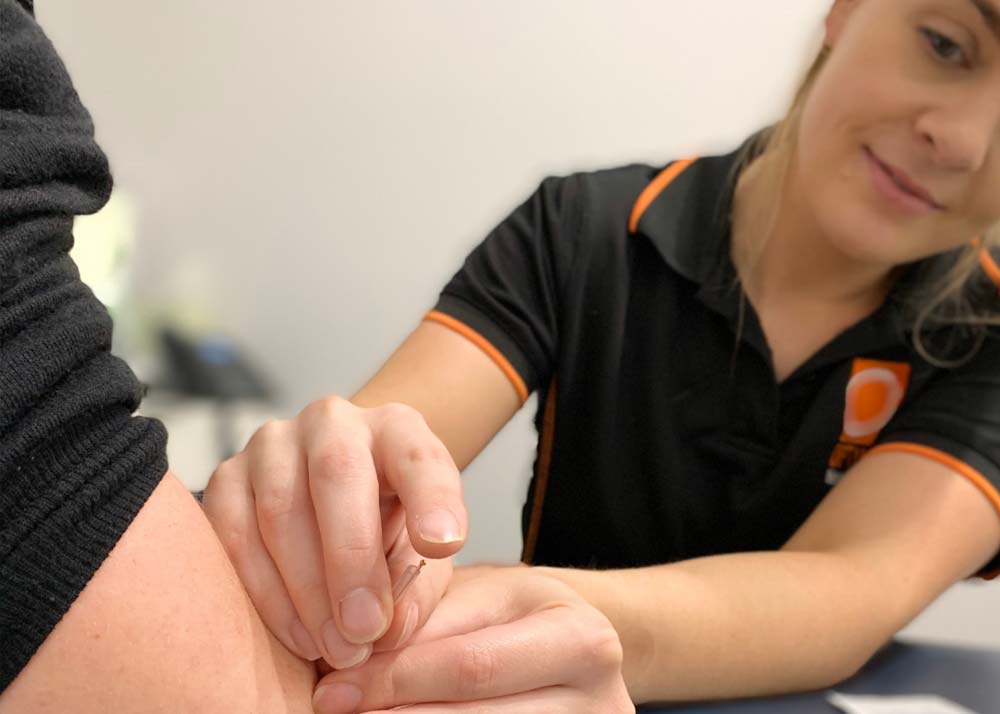Do you have persistently tight muscles? Do you feel that you have knots in your muscles? Have you been stressed out recently or been suffering from headaches? Do you feel you would feel much better if you could just relax more? If you said yes to any of these questions, then you could potentially benefit from dry needling treatment. But what is dry needling? What effect does it have? And last but not least: Is it safe?
Dry needling is similar but not identical to acupuncture. Dry needling involves the insertion of very fine needles into focal, tender and taut bands of muscle known as trigger points. This process helps to release the trigger points, which will then relieve any referred pain patterns instigated by the trigger point. The muscle will also relax. Many clients report a calming, relaxing sensation in the muscle treated. Dry needling can be used to treat specific areas of muscle tightness, or it may be used in a comprehensive treatment plan to address particular health conditions.
There are two main types of dry needling: superficial and deep. Superficial needling will almost always be painless, and involves inserting the needle to only a very shallow depth. This is a milder form of needling and may be used if you are
particularly apprehensive about needles. This is still an effective form of needling and will still reap benefits.
Deep needling involves inserting the needles to a greater depth and agitating the needle. This is a more effective form of needling, which will almost certainly hit and alleviate the trigger point. However, this may cause some discomfort and as such, this judiciously may or may not be used on someone who has not previously received needling. While the two different types of needling have different clinical applications, there is good evidence in the current research literature that both forms of needling are effective in alleviating trigger points.
Benefits of Dry Needling
Dry needling has many benefits. These include the treatment of trigger points, relaxing overly tight muscles, assistance in treating particular conditions and to aid in relaxing and de-stressing. These benefits are certainly noticeable and worthwhile! But what about the risks?
Dry needling is an extremely safe form of treatment. The practitioner who has been qualified to perform dry needling is aware of the local anatomy and will know what size needle to use and in what direction to insert the needle. Thus, any local major blood vessels or nerves will be avoided by a very large margin. Adverse reactions to needling occur in an extremely small proportion of the population, and are so rare that they are studied as isolated case reports.
So that is a short introduction to the efficacy and safety of dry needling treatment? Overwhelmingly, the benefits outweigh the risks. So if you are interested in needling treatment or would like more information on how dry needling can help you, book in to see an Optimum Health Solutions Physiotherapist today and experience the results for yourself!








